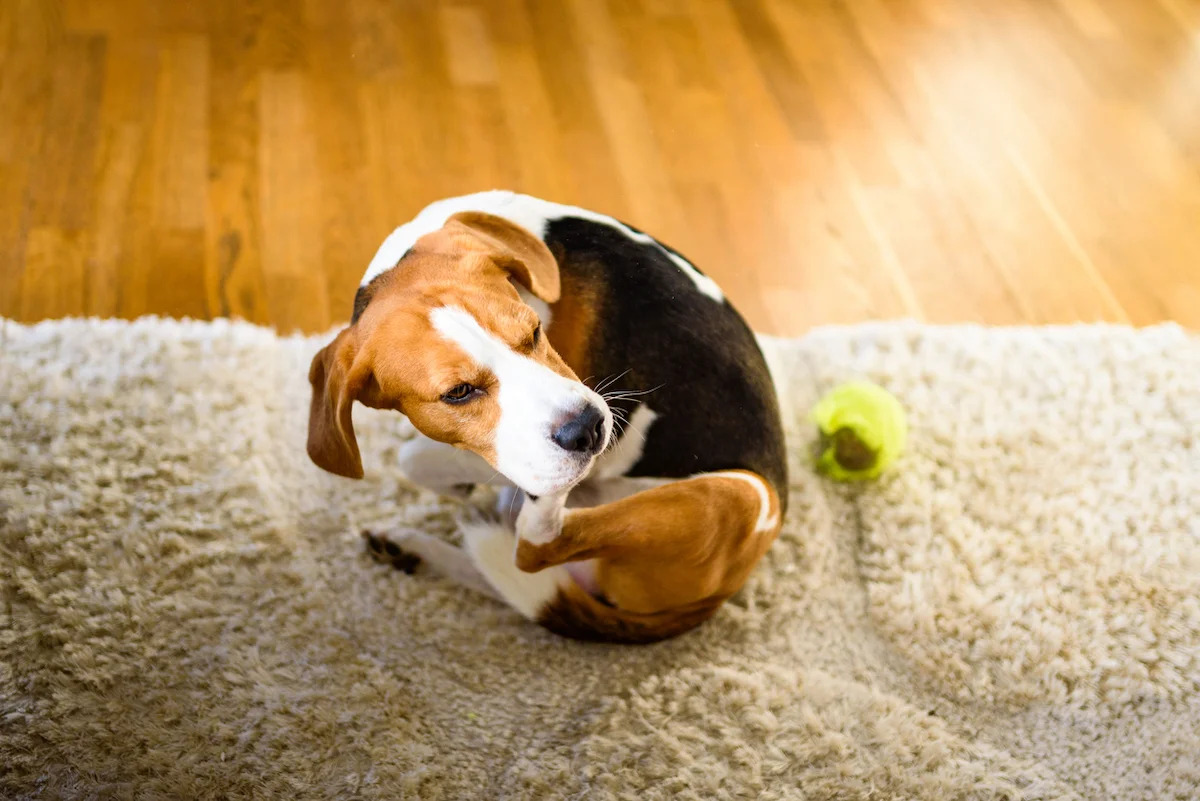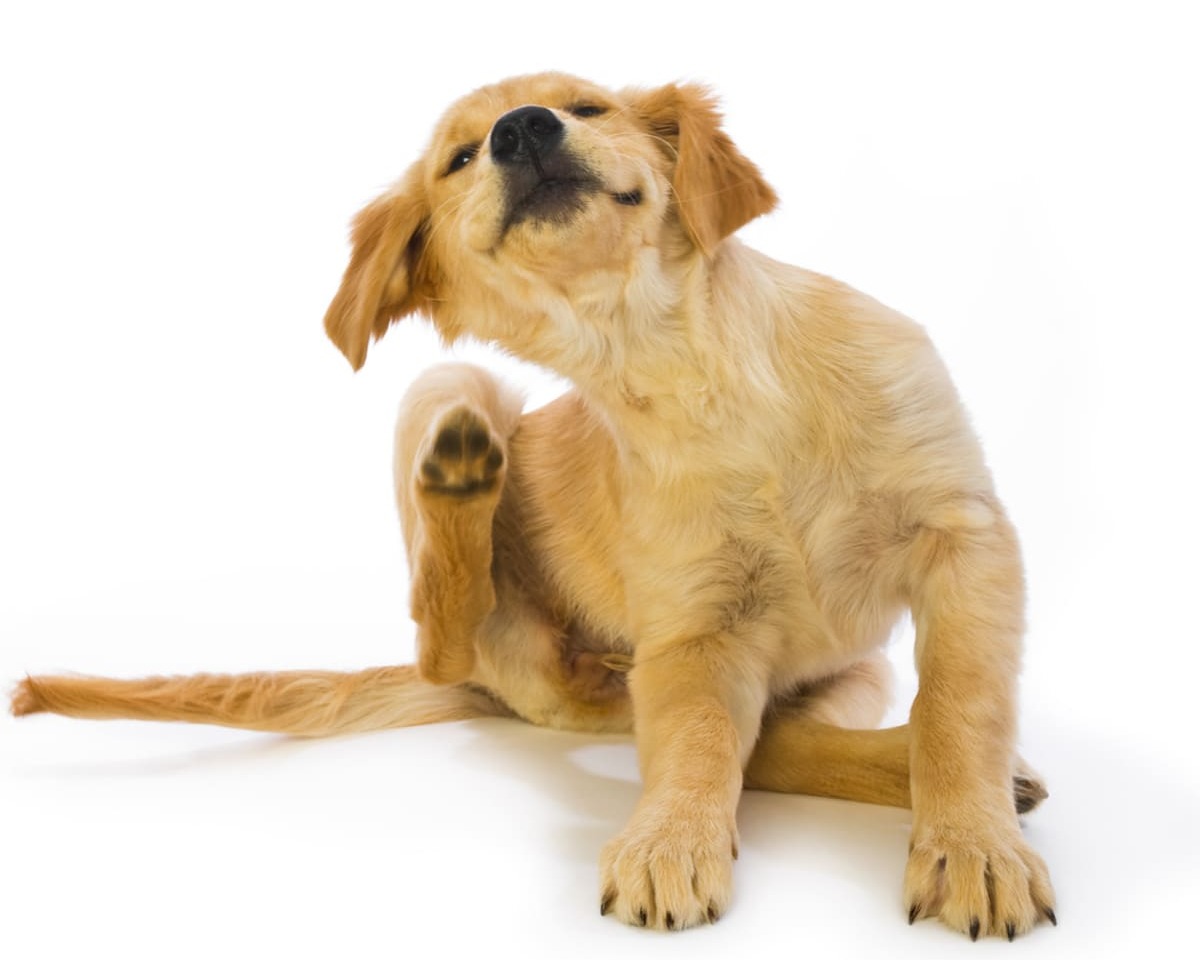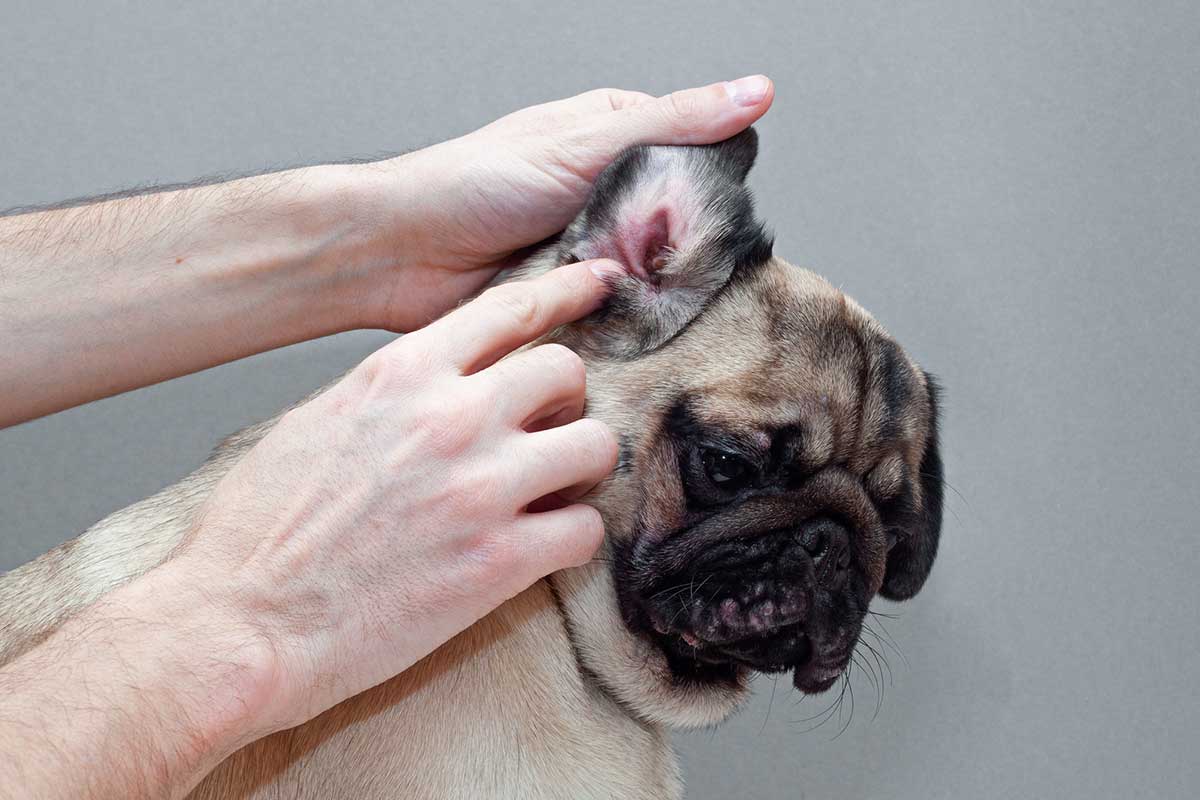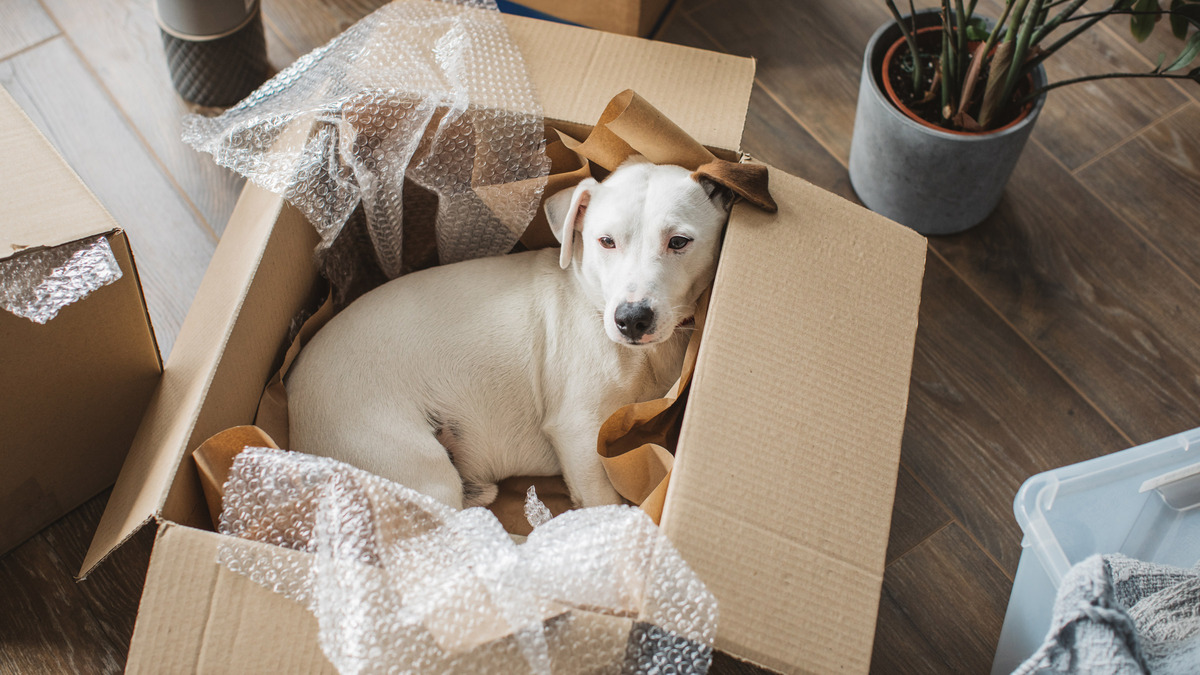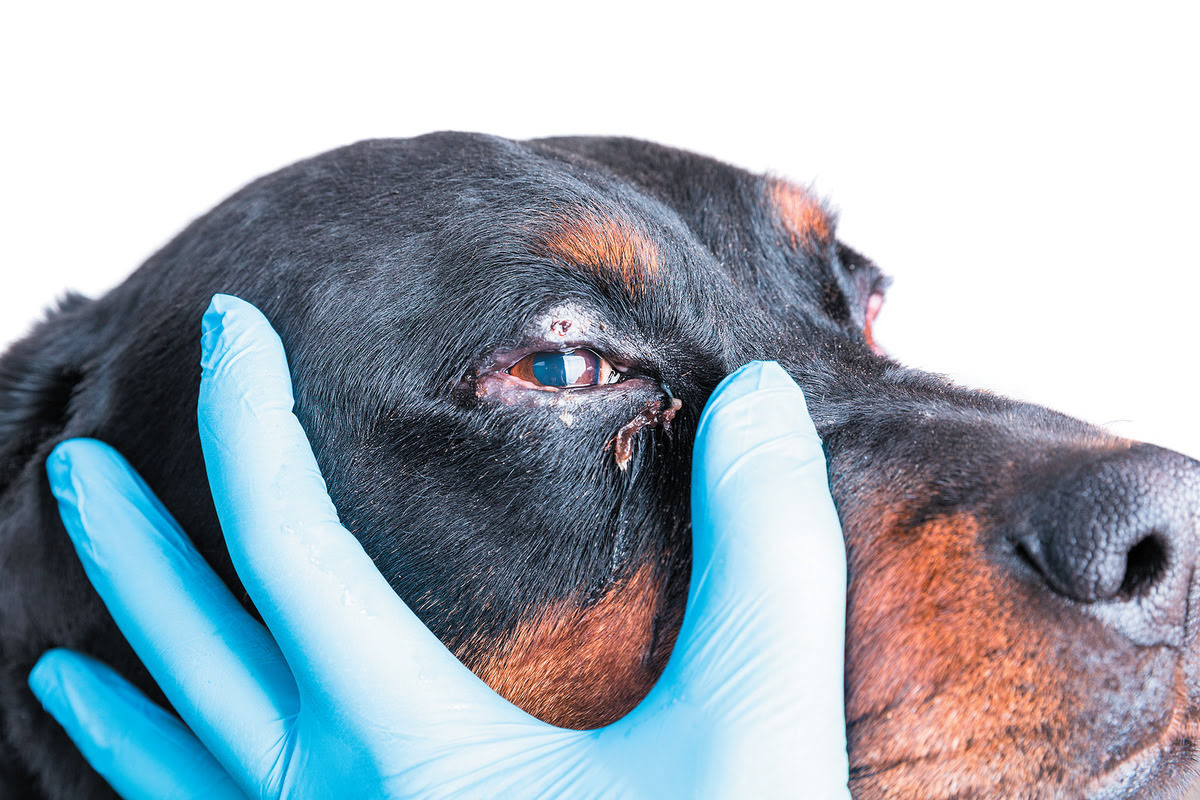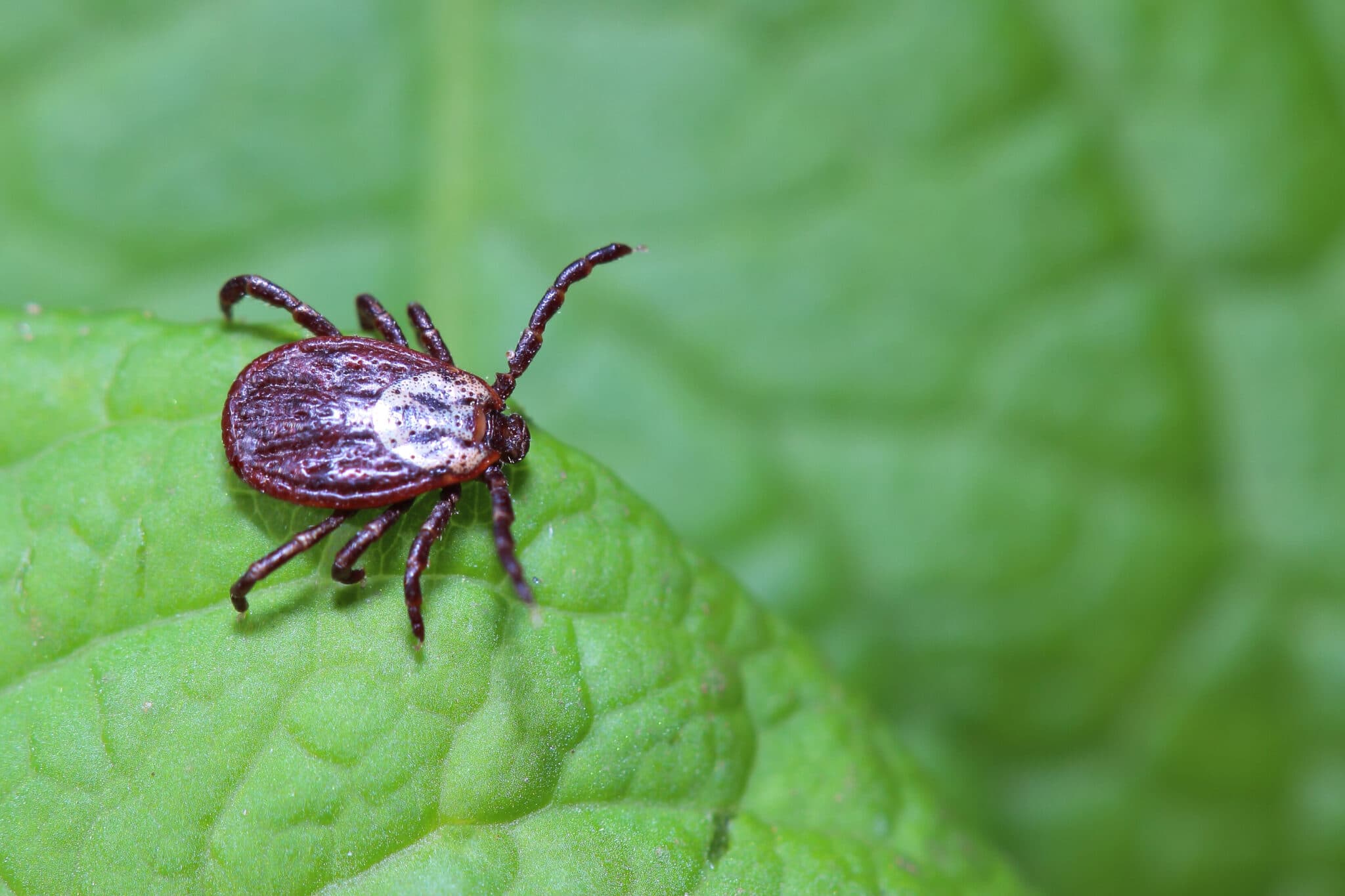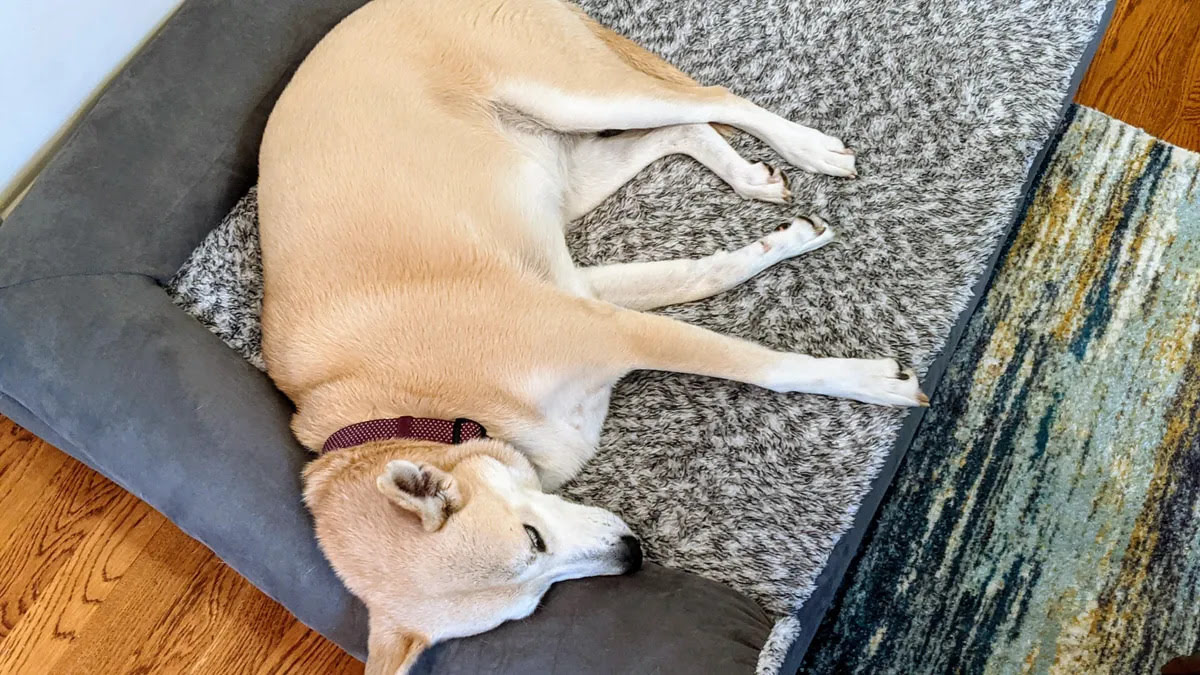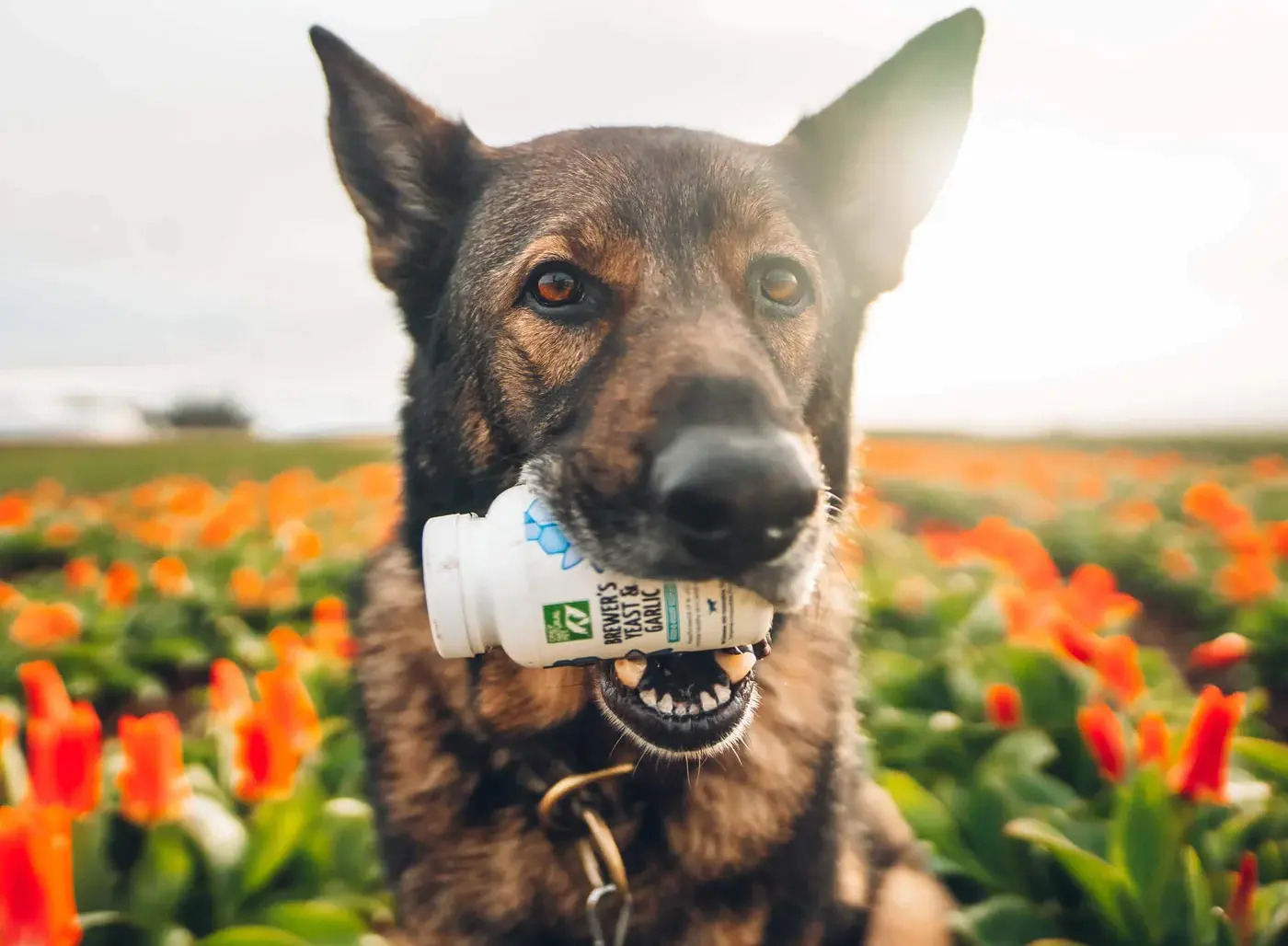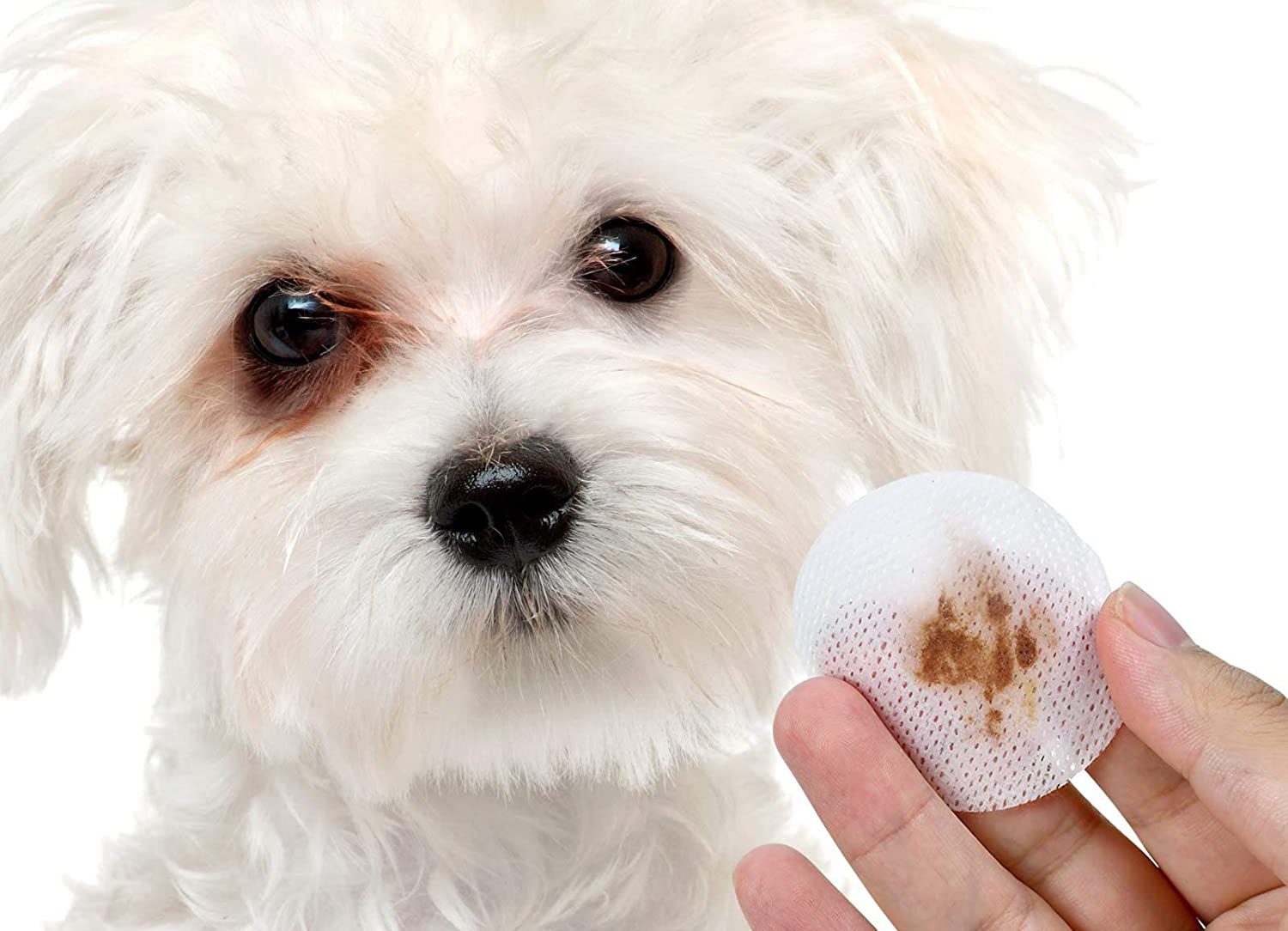Home>Health & Wellness>Common Health Issues>How To Get Rid Of Dog Fleas And Lice
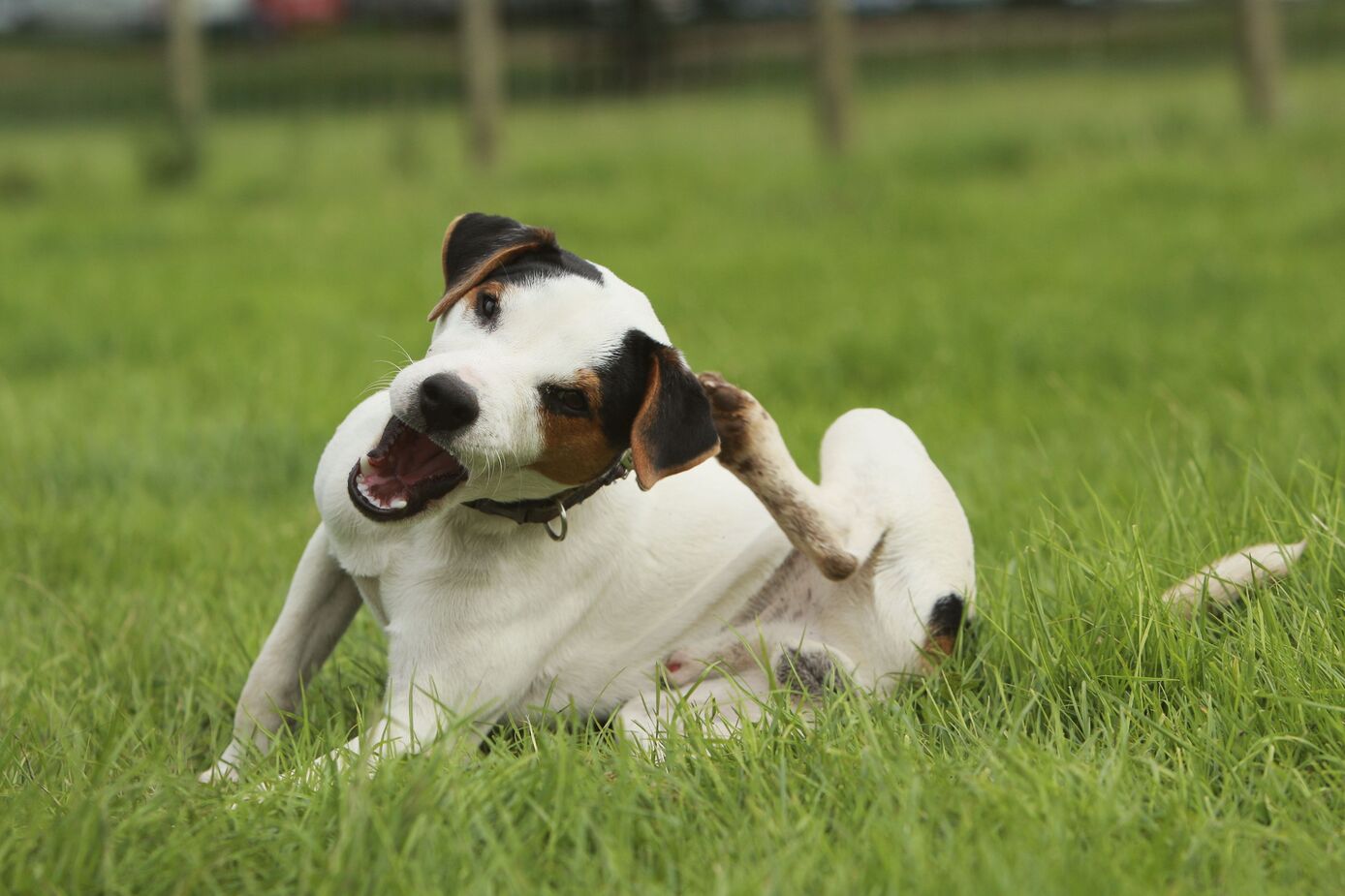

Common Health Issues
How To Get Rid Of Dog Fleas And Lice
Modified: February 21, 2024
Learn effective ways to eliminate dog fleas and lice, two common health issues among pets. Discover tips and products for a flea-free and healthy pet.
(Many of the links in this article redirect to a specific reviewed product. Your purchase of these products through affiliate links helps to generate commission for Pawsomeoldies.com, at no extra cost. Learn more)
Table of Contents
Introduction
Dealing with dog fleas and lice can be a challenging and frustrating experience for pet owners. These pesky parasites not only cause discomfort for our furry friends but can also infest our homes if left unchecked. Understanding how to effectively manage and prevent flea and lice infestations is crucial for maintaining the health and well-being of our beloved pets.
In this comprehensive guide, we will explore the various aspects of dog fleas and lice, including their characteristics, signs and symptoms of infestation, preventive measures, treatment options, and natural remedies. By gaining a deeper understanding of these common health issues, pet owners can take proactive steps to protect their dogs and create a safe and comfortable living environment for the entire family.
Throughout this article, we will delve into the world of dog fleas and lice, shedding light on their behavior, potential health risks, and the most effective strategies for eradication and prevention. Whether you're a seasoned pet owner or a first-time dog parent, this guide will equip you with the knowledge and tools needed to tackle flea and lice infestations with confidence and compassion.
Join us on this informative journey as we uncover the best practices for addressing dog fleas and lice, empowering you to provide your canine companions with the care and protection they deserve. Let's embark on this exploration of canine health and well-being, arming ourselves with valuable insights and practical solutions to keep our furry friends free from the grip of these persistent parasites.
Read more: How To Get Rid Of Fleas In A Dog Pen
Understanding Dog Fleas and Lice
Dog fleas and lice are common external parasites that can cause significant discomfort and health issues for our canine companions. Understanding the characteristics and behavior of these pests is essential for effectively managing and preventing infestations.
Dog Fleas
Fleas are small, wingless insects that thrive by feeding on the blood of mammals, including dogs. These tiny pests have flattened bodies, enabling them to move swiftly through the fur of their hosts. Fleas reproduce rapidly, with a single female flea capable of laying hundreds of eggs within a short period. These eggs can easily scatter throughout the environment, including carpets, bedding, and furniture, leading to widespread infestations.
Dog Lice
Unlike fleas, lice are wingless insects that spend their entire lives on the host animal. There are two main types of lice that affect dogs: chewing lice and sucking lice. Chewing lice feed on skin debris and hair, while sucking lice consume blood. Lice infestations are less common than flea infestations but can still cause significant discomfort and skin irritation for dogs.
Transmission
Both fleas and lice can be transmitted through direct contact with infested animals or through exposure to contaminated environments. Dogs that socialize with other animals or frequent areas where infestations are present are at a higher risk of acquiring these parasites. Additionally, pet owners can inadvertently introduce fleas and lice into their homes through contact with infested animals or contaminated objects.
Read more: How To Get Rid Of Fleas And Ticks On My Dog
Health Risks
Flea and lice infestations can lead to a range of health issues for dogs, including skin irritation, allergic reactions, hair loss, and in severe cases, anemia. Constant scratching and biting at infested areas can cause discomfort and distress for dogs, impacting their overall well-being. Furthermore, these parasites can serve as vectors for other diseases and internal parasites, posing additional health risks for our canine companions.
By gaining a deeper understanding of the behavior and impact of dog fleas and lice, pet owners can take proactive measures to protect their pets and prevent infestations from taking hold. In the following sections, we will explore the signs and symptoms of infestation, preventive strategies, treatment options, and natural remedies to empower pet owners in effectively managing these common health issues.
Signs and Symptoms
Identifying the signs and symptoms of dog flea and lice infestations is crucial for prompt intervention and effective management. By recognizing the telltale indicators of these parasitic invasions, pet owners can take proactive steps to alleviate their pets' discomfort and prevent the spread of infestations.
Flea Infestation Symptoms
-
Excessive Scratching and Biting: Dogs infested with fleas often exhibit heightened levels of scratching, biting, and licking, particularly in areas such as the base of the tail, abdomen, and hind legs. The persistent discomfort caused by flea bites leads to these behaviors, indicating the presence of fleas.
-
Visible Fleas or Flea Dirt: Flea dirt, which resembles fine black specks, may be noticeable on the dog's skin or fur. This is a clear indication of flea infestation and is often found in areas where the dog spends a significant amount of time.
-
Hair Loss and Skin Irritation: Flea bites can result in skin irritation, redness, and hair loss in affected areas. Dogs may develop hot spots or dermatitis due to allergic reactions to flea saliva, further exacerbating their discomfort.
-
Restlessness and Agitation: Infested dogs may display signs of restlessness, agitation, and discomfort, as the constant itching and irritation disrupt their normal behavior and demeanor.
Lice Infestation Symptoms
-
Scratching and Irritation: Dogs infested with lice may exhibit similar behaviors to those with flea infestations, including excessive scratching and skin irritation. Lice feed on the dog's blood and can cause significant discomfort, prompting the affected dog to seek relief through scratching and biting.
-
Visible Lice or Nits: Lice and their eggs, known as nits, may be visible on the dog's fur, particularly in areas with close proximity to the skin, such as around the ears, neck, and shoulders. These tiny, wingless insects and their eggs are indicative of a lice infestation.
-
Dry, Flaky Skin: Lice infestations can lead to dry, flaky skin and dandruff in affected areas. The presence of lice and their feeding activities can irritate the skin, leading to these observable symptoms.
-
Behavioral Changes: Dogs suffering from lice infestations may display changes in behavior, such as increased restlessness, discomfort, and a reluctance to be touched or handled in infested areas.
By remaining vigilant and attentive to these signs and symptoms, pet owners can promptly address flea and lice infestations, seeking appropriate treatment and preventive measures to safeguard their dogs' well-being. In the subsequent sections, we will delve into preventive strategies, treatment options, and natural remedies to empower pet owners in combating these common health issues.
Read more: How To Naturally Get Rid Of Fleas From A Dog
Prevention
Preventing dog flea and lice infestations is a proactive approach that can significantly reduce the risk of parasitic invasions and safeguard the health and comfort of our canine companions. By implementing comprehensive preventive strategies, pet owners can create a protective barrier against these persistent parasites, minimizing the likelihood of infestations and their associated health risks.
Regular Grooming and Hygiene
Maintaining a regular grooming routine for dogs is essential for preventing flea and lice infestations. Regular baths with vet-approved shampoos and conditioners can help remove and repel parasites, keeping the dog's coat clean and healthy. Additionally, thorough brushing and combing can help detect and remove any fleas, lice, or their eggs that may be present in the fur.
Environmental Management
Keeping the dog's living environment clean and well-maintained is crucial for preventing flea and lice infestations. Regular vacuuming of carpets, upholstery, and pet bedding can help eliminate flea eggs, larvae, and adults from the environment. Washing the dog's bedding and toys in hot water can also help eradicate any parasites that may be present.
Regular Veterinary Check-ups
Scheduling regular veterinary check-ups for dogs allows for early detection of potential flea and lice infestations. Veterinarians can provide guidance on preventive measures, recommend suitable flea and lice control products, and conduct thorough examinations to ensure the dog's overall health and well-being.
Read more: How To Get Rid Of Fleas In Home And On Dog
Flea and Lice Control Products
Utilizing vet-recommended flea and lice control products, such as topical treatments, oral medications, and collars, can effectively prevent infestations. These products are designed to repel and eliminate parasites, providing long-lasting protection for dogs. It is essential to follow the usage instructions provided by the veterinarian or product manufacturer for optimal effectiveness.
Regular Cleaning and Maintenance
Maintaining a clean and well-groomed living environment for dogs is essential for preventing flea and lice infestations. Regularly cleaning and sanitizing areas where the dog spends time, such as crates, bedding, and play areas, can help minimize the risk of infestations. Additionally, keeping outdoor areas free from debris and maintaining a well-kept yard can reduce the likelihood of exposure to fleas and lice.
By incorporating these preventive measures into their pet care routines, pet owners can create a protective shield against flea and lice infestations, promoting the health, comfort, and well-being of their beloved dogs. Taking a proactive stance in preventing these common health issues is key to fostering a safe and nurturing environment for our furry companions.
Treatment Options
When faced with a dog flea or lice infestation, prompt and effective treatment is essential to alleviate the discomfort of the affected pet and prevent the spread of parasites. Fortunately, there are various treatment options available to address these common health issues and restore the well-being of our canine companions.
Veterinary Prescribed Medications
Veterinarians can prescribe a range of medications to combat flea and lice infestations in dogs. These may include topical treatments, oral medications, and medicated shampoos specifically formulated to eliminate parasites. Topical treatments, such as spot-on solutions, are applied directly to the dog's skin, providing long-lasting protection against fleas and lice. Oral medications, including chewable tablets, can effectively target parasites from within the dog's system, disrupting their life cycle and preventing reinfestation. Medicated shampoos are designed to cleanse the dog's coat while eradicating parasites, offering immediate relief from itching and irritation.
Environmental Treatments
In addition to treating the affected dog, it is crucial to address the environmental factors contributing to flea and lice infestations. Environmental treatments, such as premise sprays and foggers, can be used to eliminate parasites in the dog's living environment. These products target flea eggs, larvae, and adults present in carpets, upholstery, and other household surfaces, effectively breaking the life cycle of the parasites and preventing reinfestation.
Flea and Lice Collars
Flea and lice collars are designed to provide continuous protection against parasites. These collars release active ingredients that repel and kill fleas and lice, creating a protective barrier around the dog's neck and upper body. By utilizing flea and lice collars, pet owners can ensure ongoing protection for their dogs, reducing the risk of infestations and minimizing the discomfort caused by parasites.
Professional Grooming Services
Professional grooming services can play a vital role in treating flea and lice infestations. Experienced groomers can provide thorough baths, flea dips, and grooming sessions tailored to eliminate parasites and soothe the dog's skin. Additionally, grooming professionals can offer valuable insights and recommendations for ongoing parasite control, empowering pet owners to maintain a healthy and parasite-free coat for their dogs.
Follow-Up Care and Prevention
Following the initial treatment of flea and lice infestations, it is essential to implement preventive measures to minimize the risk of reinfestation. This may include regular use of preventive medications, environmental management, and ongoing monitoring for signs of parasites. By staying proactive and vigilant, pet owners can effectively manage flea and lice infestations, ensuring the long-term health and well-being of their beloved dogs.
By leveraging these treatment options and taking a comprehensive approach to parasite control, pet owners can address flea and lice infestations with confidence and compassion, providing their dogs with the relief and protection they deserve.
Natural Remedies
In addition to conventional treatment options, natural remedies can offer alternative approaches to managing dog flea and lice infestations. These remedies, derived from natural ingredients and holistic practices, can complement traditional treatments and provide pet owners with additional tools for combating these persistent parasites.
Herbal Flea Collars
Herbal flea collars, infused with natural ingredients such as essential oils and botanical extracts, can serve as a non-toxic and aromatic deterrent against fleas and lice. Ingredients like cedarwood, eucalyptus, and lavender possess natural flea-repelling properties, offering a gentle yet effective means of protecting dogs from infestations.
Diatomaceous Earth
Diatomaceous earth, a fine powder derived from fossilized algae, is known for its natural insecticidal properties. When applied to the dog's coat and living environment, diatomaceous earth can desiccate and eliminate fleas and lice through physical action, without the use of harsh chemicals. It is important to use food-grade diatomaceous earth and follow safety guidelines when applying this natural remedy.
Apple Cider Vinegar
Apple cider vinegar, when diluted with water, can be used as a natural flea and lice repellent. The acidic nature of apple cider vinegar creates an environment that is inhospitable to parasites, making it a popular choice for pet owners seeking natural solutions. Regularly spraying a diluted apple cider vinegar solution on the dog's coat can help deter fleas and lice while promoting a healthy skin pH balance.
Read more: How To Get Rid Of Fleas On My Cat And Dog
Herbal Baths and Rinses
Herbal baths and rinses, incorporating herbs such as rosemary, chamomile, and neem, can offer soothing relief for dogs affected by flea and lice infestations. These herbal infusions possess natural insect-repelling and skin-soothing properties, providing a holistic approach to managing parasites while nurturing the dog's skin and coat.
Essential Oil Sprays
Essential oils, when used in diluted form and under the guidance of a veterinarian, can serve as natural flea and lice repellents. Oils such as lavender, peppermint, and citronella can be blended with carrier oils and water to create aromatic sprays that help repel parasites while imparting a pleasant scent to the dog's coat.
By incorporating these natural remedies into their parasite control regimen, pet owners can explore holistic and gentle approaches to managing dog flea and lice infestations. It is important to consult with a veterinarian before using natural remedies, ensuring that they are safe and suitable for the specific needs of the dog. With a balanced approach that combines natural remedies with veterinary guidance, pet owners can provide their dogs with comprehensive care and protection against these common health issues.
Conclusion
In conclusion, addressing dog flea and lice infestations requires a multifaceted approach that encompasses understanding, prevention, treatment, and natural remedies. These common health issues can significantly impact the well-being of our canine companions, causing discomfort, skin irritation, and potential health risks. By gaining a deeper understanding of the behavior and impact of dog fleas and lice, pet owners can take proactive measures to protect their pets and prevent infestations from taking hold.
Recognizing the signs and symptoms of flea and lice infestations is crucial for prompt intervention and effective management. By remaining vigilant and attentive to these indicators, pet owners can promptly address infestations, seeking appropriate treatment and preventive measures to safeguard their dogs' well-being.
Preventing dog flea and lice infestations is a proactive approach that can significantly reduce the risk of parasitic invasions and safeguard the health and comfort of our canine companions. By implementing comprehensive preventive strategies, pet owners can create a protective barrier against these persistent parasites, minimizing the likelihood of infestations and their associated health risks.
When faced with a dog flea or lice infestation, prompt and effective treatment is essential to alleviate the discomfort of the affected pet and prevent the spread of parasites. Leveraging veterinary-prescribed medications, environmental treatments, flea and lice collars, and professional grooming services can provide comprehensive solutions for addressing these common health issues.
In addition to conventional treatment options, natural remedies can offer alternative approaches to managing dog flea and lice infestations. Herbal flea collars, diatomaceous earth, apple cider vinegar, herbal baths and rinses, and essential oil sprays can complement traditional treatments and provide pet owners with additional tools for combating these persistent parasites.
By incorporating these strategies and taking a comprehensive approach to parasite control, pet owners can address flea and lice infestations with confidence and compassion, providing their dogs with the relief and protection they deserve. Ultimately, by arming themselves with knowledge and proactive measures, pet owners can create a safe and nurturing environment for their furry companions, free from the grip of these persistent parasites.
